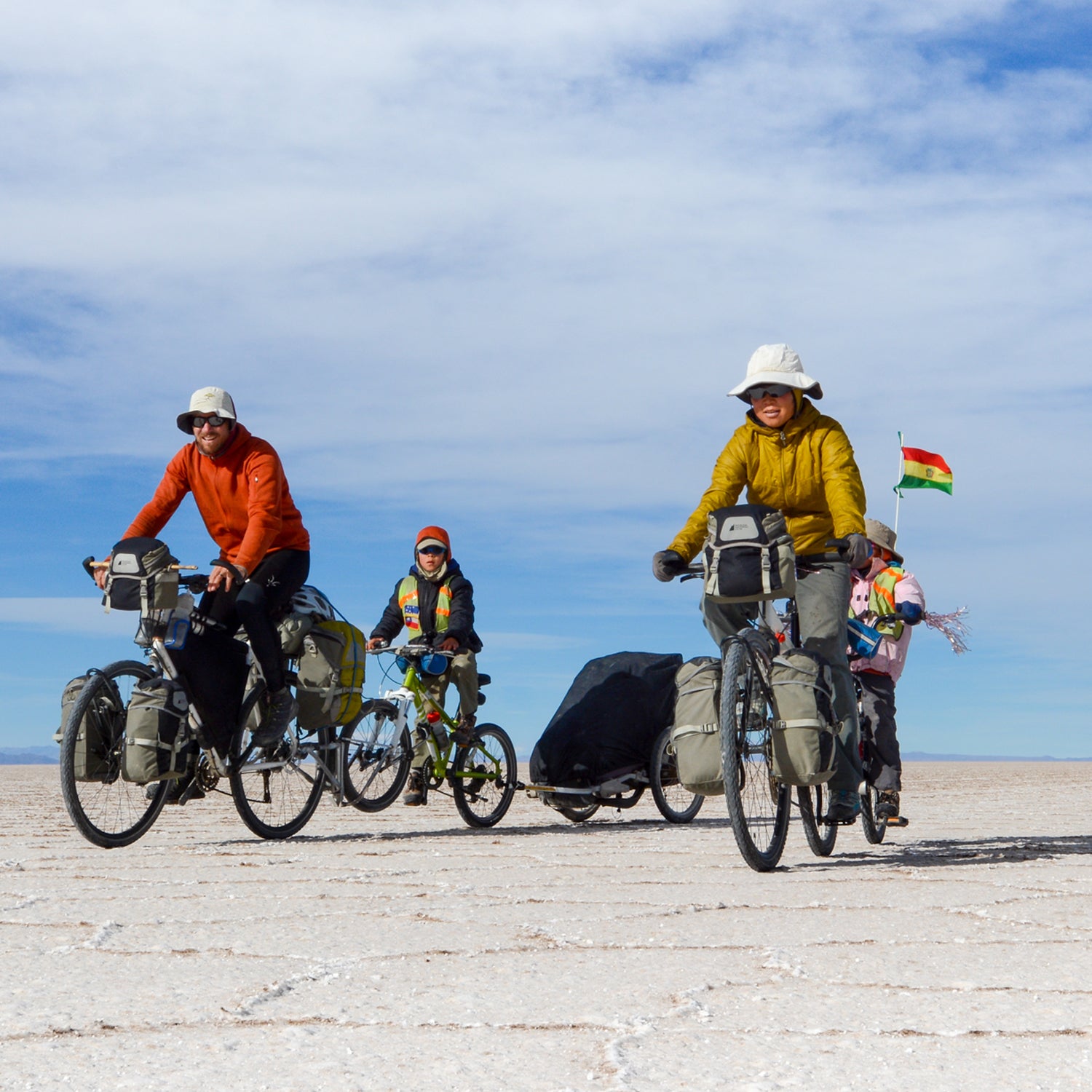Next month, will head out their first family backpacking trip with their two kids, Koby, 9, and Ava Fei, 7. Their itinerary is a little more ambitious than most families with small children: a 30-day, 120-mile traverse of the Canadian Rockies, with 45,000 feet of elevation gain. “We’ve scaled back the distance. It’s only four miles per day,” says Dan, a filmmaker and seasoned explorer who used to guide in those mountains in his 20s. “None of the climbs are enormous—but it does add up.”
This may be the first time the kids have “walked every step,” as Dan puts it, but they’re anything but novices when it comes to . The Clarks took Koby on a ten-day backpacking trip across the Arctic Circle when he was three months old. They’ve since spent 40 days canoeing Prince William Sound, 55 days across the tundra, and 100 days on the Arctic Ocean. They also cycled 3,600 miles in seven months along the Andes in South America.
Jaw-dropping resume aside, Dan insists that his is “a pretty normal family.” “We have soccer practice four nights a week, piano lessons, and our cell phones interfere more than we would like,” he wrote in an email. “Bedtime is a challenge. But we work hard to get away on trips when we have time off. The simplicity, adventure, and purpose of these trips provide us with authentic challenges and deeper connection to each other.”
Don’t be daunted: you don’t have to go long to go big. Here are Dan’s tips, in his own words, for bringing a little bit of wildness into your family life.
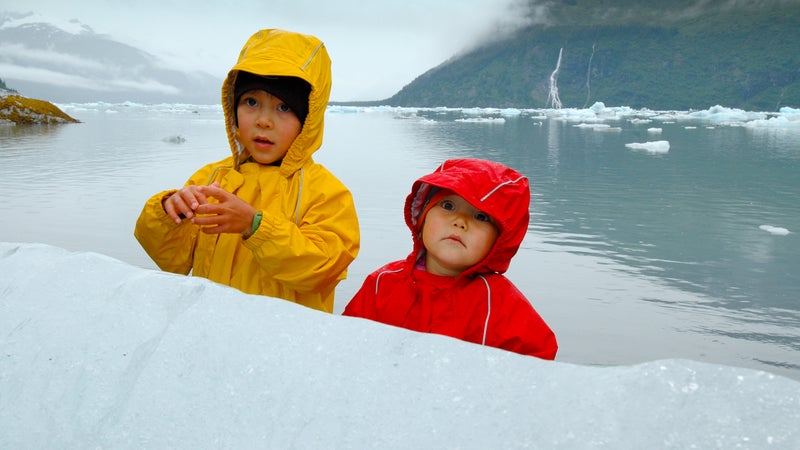
Start Young
Suddenly when babies are three months old, their heads don’t fall off their necks anymore. If they’re breastfeeding they can go anywhere in a Snuggli [baby carrier]. On Baffin Island, we had a huge rain jacket that we modified to drape over him so he was out of the weather. We saw other people pulling their babies in a Chariot, and the kids would be crying. In those early months being close is so important. Sometimes we’d meet a couple dads out paddling by themselves. They’d see us with our children and say, “We didn’t think our kids were old enough to do something like this. They’re ten and 12.”
Live Your Own Life
We’ve definitely had kids over to the house to play after we did big trips and we’d hear them tell our kids, “Your parents are crazy.” But we’re not on social media. I disable all the comments on my videos. I’ve sort of stayed away from that side of it. I think more than taking kids into the wilderness, people just think it’s crazy amount of logistics to organize. They think, “I can’t imagine organizing a three-month trip for myself, let alone for my kids.”
Plan Ahead for the Long Haul
The stress of organizing a two-day trip is almost as great as that of a month. You’re doing it at the last minute. You’re worried all weekend about work on Monday. For our month long trips, I’m planning months ahead. Yes, you pack more food but not necessarily more stuff. If anything, you’re more careful, you take less stuff. On short trips, our car is bursting. When we drive to Alaska for the summer, we drive a Honda Civic. Our philosophy is, if it fits in the car, it will fit in the canoe.
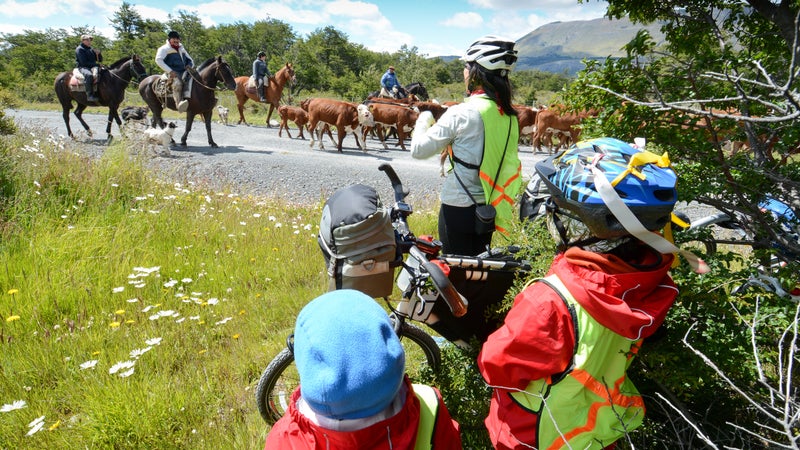
Divide and Conquer
Alice and I both love big trips, but there’s definitely differences. I enjoy the logistics, puzzling through what’s appropriate for kids, whereas Alice gets nervous. Yet when we’re on the trip, she’s looking after the kids. I’m the one in the moment feeling the burden of responsibility, thinking, “What have I done bringing us here?” and she’s a total rock. In camp, I get the tents set up and cook meals and she takes the kids down to the shore to toss rocks.
Don’t Be a Drill Sergeant
This last summer, paddling up in the Northwest Territories, the kids were pretty good with helping us set up the cook tarp. Some days we had a head wind and we needed their help paddling. But it wasn’t all day everyday. If we’ve had a long day of travel and they have free time to create and make gnome houses or go swimming, then I’m happy seeing them doing that. Cycling in South America, we’d be on the bike all day, and as soon as we got to camp they were both riding around camp or out gathering firewood because they wanted to have a fire.
Embrace the Unknown
On a daily basis on long trips, you pack up camp and head into unknown and don’t know how it’s going to work. Dealing with uncertainty is healthy for kids. It teaches them a lot.
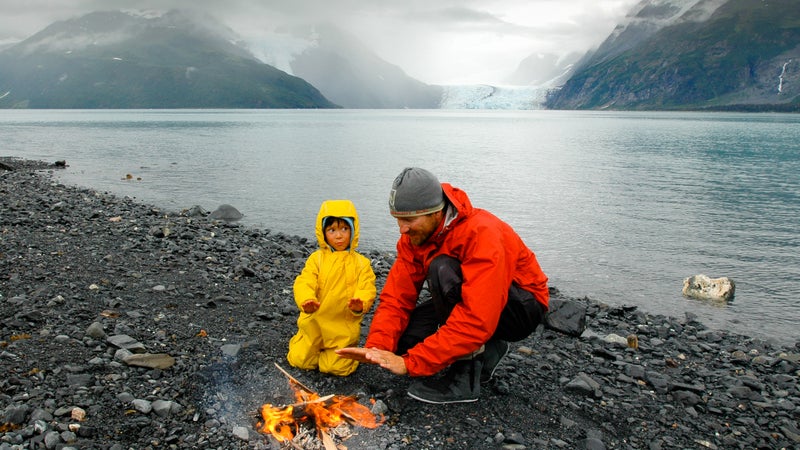
Learn from Mistakes
A year ago, we sunk our boat in a little rapid. This was a trip northeast of Yellowknife. The rapid was so small, we kept the kids in the boat. We’d never done that before, but I was starting to feel the pressure of getting behind schedule. I made that classic mistake of pushing through. The bad thing was that boat hung up and collapsed. The good thing is, Alice had jumped in and had the kids in half a second, it was waist deep.
To see them as the boat went over was probably one of my worst moments ever. But we were totally fine. It was really interesting to get them dried out and back in the boat, and get boat fixed, and debrief and own the mistakes we made. Kids are pretty resilient.
Start Small
If you’ve got a week off with weekend on either end, those five days in the middle are pretty ideal to plan your first backcountry trip. That gives you two days on the front end to pack and drive, and a couple days to come back home and re-enter your busy schedule.
Kids Ride Free
If the kids don’t have to actively be moving every step of the journey, it gives them an opportunity to be part of the trip but not be tired and have to push through some of the challenges. Paddling is great, whether it's a canoe or kayak or raft. So is cycling—we put our kids on tag-along bikes, so they can pedal when they feel like it. Find a rail trail or gravel road where you're not dealing with much traffic. In South America, we rode north from Torres del Paine. Most of the roads were quiet.
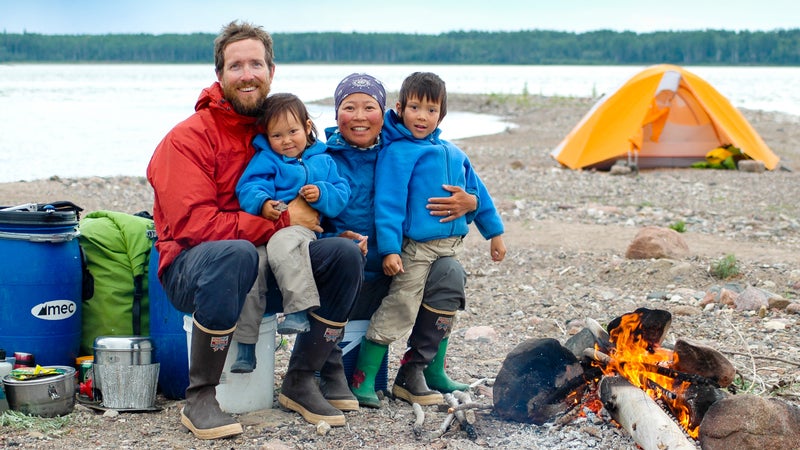
Get Creative with Gear
We were worried about Ava Fei getting tired and sleepy on her trailer bike, so we modified it and put a back and seat belt on so she couldn’t fall off, but she could pedal if she wanted. Koby has a , which is a coupling that allows his bike to attach to the rear wheel of mine, and when we pull it off, he has a full bike for riding on his own. It gave him a wonderful sense of freedom and independence. On our last trip, he was often faster than me on the climbs. We had a Chariot trailer attached to him that held a lot of our gear. It was hard work!
Consider the Arctic
Cold water is what everyone worries about up there, but it’s not a big consideration. The Mackenzie River is full of sediment, which can make the water quite warm, and you have these long days. At 11 p.m. the sun is shining. There’s no shade north of tree-line. Near the mouth of Mackenzie the kids were bathing in Arctic Ocean, not just for a few minutes but for more than an hour! It’s those deep lakes, like Great Slave, that are very cold. On Prince William Sound, Alice and I wore dry suits, and the kids were in full rain suits and fleece and gear. We had a planned rescue system where I could roll the boat.
Two Words: Lunch Bags
On paddling trips, fresh fruit is the most amazing treat. That apple you pull out of the food barrel—you could get 40 minutes of solid, distraction-free paddling on that apple! Now that the kids are six and eight, we’ve found that if they have their own lunch bag, they can decide what to eat and when. They’re in charge. A bit of dried fruit or pepperoni, some honey on a slice of bread—heaven!


